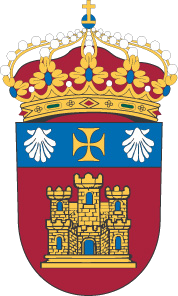Por favor, use este identificador para citar o enlazar este ítem: http://hdl.handle.net/10259/10419
Título
El juicio de proporcionalidad en la prueba de videograbación oculta a las personas trabajadoras. Análisis de la situación ante la reciente jurisprudencia
Otro título
The judgment of proportionality in the evidence of hidden video surveillance of workers. Analysis of the situation in light of recent case law
Autor
Publicado en
Revista de Trabajo y Seguridad CEF. 2021, n. 461-462, p. 99-141
Editorial
Centro de Estudios Financieros CEF
Fecha de publicación
2021
ISSN
2792-8314
DOI
10.51302/rtss.2021.2460
Resumen
El presente trabajo centra su atención en la utilización de la medida de videovigilancia laboral de manera oculta como medio de prueba en el proceso. Se pretende analizar, desde un punto de vista procesalista, los diferentes medios (y fuentes) de prueba existentes, una aproximación conceptual, y enfocarlo al área de la innovación tecnológica en este campo. De esta manera puede entenderse mejor el conflicto que la misma supone entre las partes trabajadora y empleadora, y cómo la jurisprudencia ha ido respondiendo a tal coyuntura, tanto a nivel nacional como europeo, dando un mayor enfoque en la Sentencia del Tribunal Europeo de Derechos Humanos (Gran Sala) del caso Ribalda contra España, la cual estableció una línea doctrinal fija a seguir por los diferentes órganos jurisprudenciales, y la reciente jurisprudencia de los tribunales superiores de justicia y del Tribunal Supremo. Así, y como parte final, se realiza un estudio del derecho de privacidad y del deber de informar, en conexión con el juicio de proporcionalidad que todo órgano jurisdiccional ha de realizar conforme a la necesidad e idoneidad de cada caso en concreto. This paper focuses its attention on the use of hidden labor video surveillance as a means of evidence in the process. It is intended to analyze, from a proceduralist point of view, the different existing means (and sources) of evidence, a conceptual approach, and to focus on the area of technological innovation in this field. Thus, it can be better understood the conflict that it involves between the worker and the employer, and how the jurisprudence has been responding to such situation, both at national and European level, giving a greater focus on the Judgment of the European Court of Human Rights (Grand Chamber) of the Ribalda v. Spain case, which established a fixed doctrinal line to be followed by the different jurisprudential bodies, and the recent jurisprudence of the Superior Courts of Justice and the Supreme Court of Justice. Thus, and as a final part, a study is made of the right to privacy and the duty to inform, in connection with the judgment of proportionality that every court must make according to the need and suitability of each specific case.
Palabras clave
Prueba
Derecho procesal social
Videovigilancia
Jurisprudencia
Evidence
Procedural labor law
Video surveillance
Case law
Materia
Derecho laboral
Labor laws and legislation
Derecho
Law
Versión del editor
Aparece en las colecciones
Documento(s) sujeto(s) a una licencia Creative Commons Attribution-NonCommercial-NoDerivatives 4.0 Internacional











